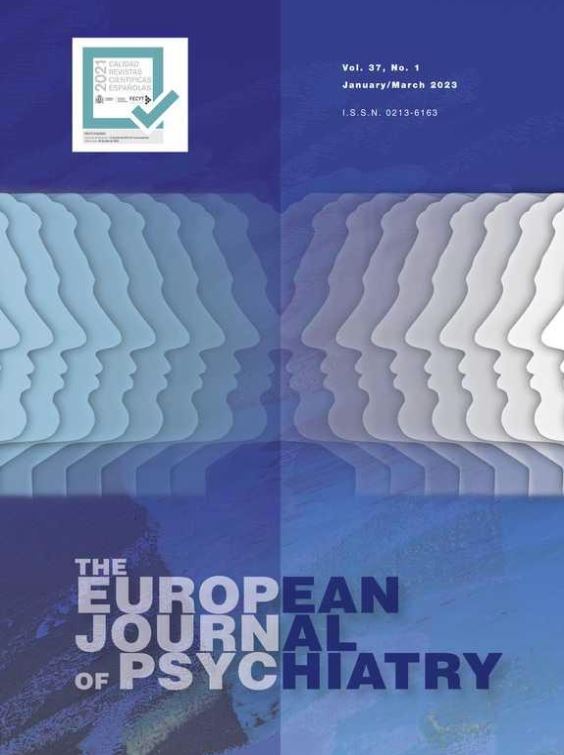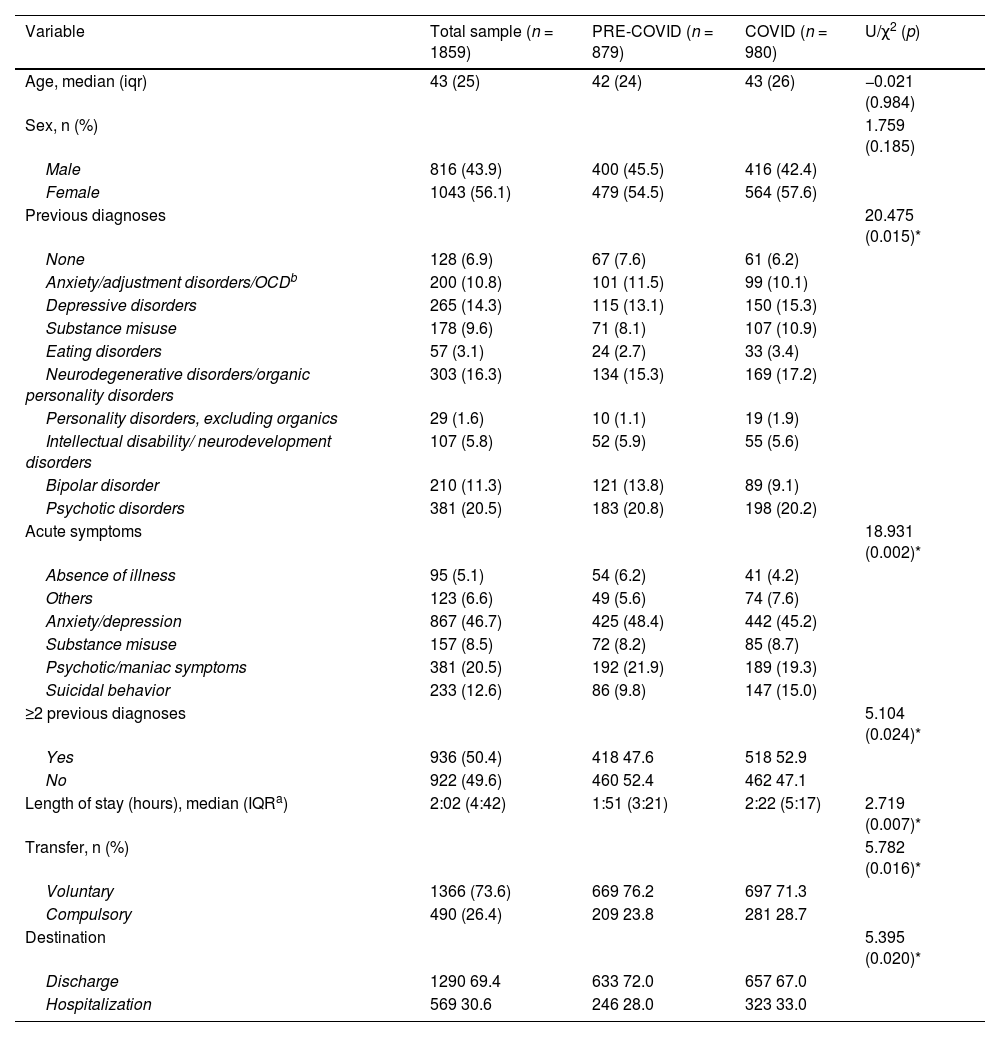The COVID-19 pandemic and the ensuing restrictive measures had a detrimental impact on the mental health of the population, potentially altering the pattern of seeking psychiatric care. A retrospective cross-sectional study was conducted to compare Psychiatric Emergencies after the most restrictive phases of the pandemic with an equivalent pre-pandemic period. Additionally, we aimed to investigate a possible association between the influx of patients to the emergency department (ED) and the cumulative incidence of COVID-19 cases.
MethodsData from the psychiatric ED of a tertiary hospital in Madrid, Spain, during the so-called “new normal” phase (October 2020 - May 2021) were compared with a corresponding period (October 2018 - May 2019).
ResultsThe number of visits to the ED significantly increased from 879 to 980 after the pandemic. Patients were more likely to be compulsorily transferred (M = 281, SD 28.7 vs. M = 209, SD 23.8) and had a higher likelihood of requiring psychiatric hospitalization (M = 323, SD 33.0 vs. M = 246, SD 28.0). Notably, the number of visits related to suicide attempts was significantly higher during the pandemic (M = 147, SD 15.0 vs. M = 86, SD 9.8), while the proportion of patients with bipolar disorder decreased (M = 89, SD 9.1 vs. M = 121, SD 13.8). No significant results were found regarding a possible association between the number of patients in the ED and the COVID-19 incidence rate.
ConclusionsThese results suggest critical changes in psychiatric emergency care and an increasing trend of suicide attempts during the pandemic, emphasizing the need for the reorganization of emergency care in future health crises.





